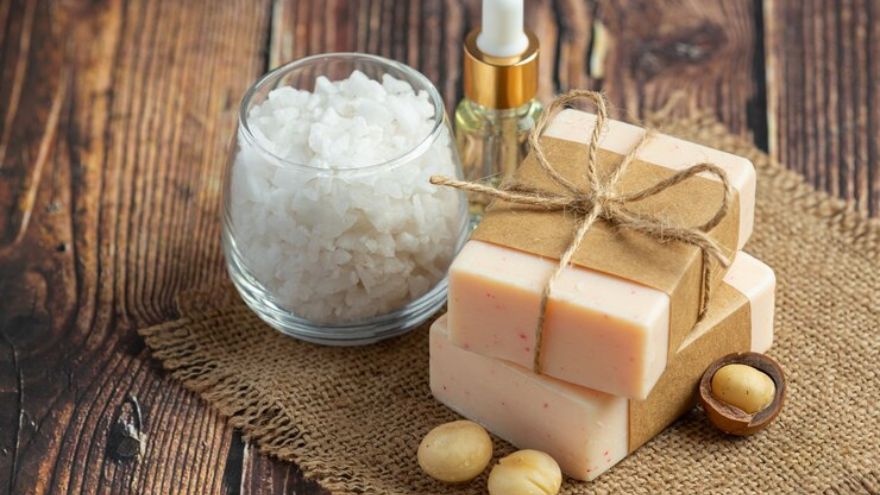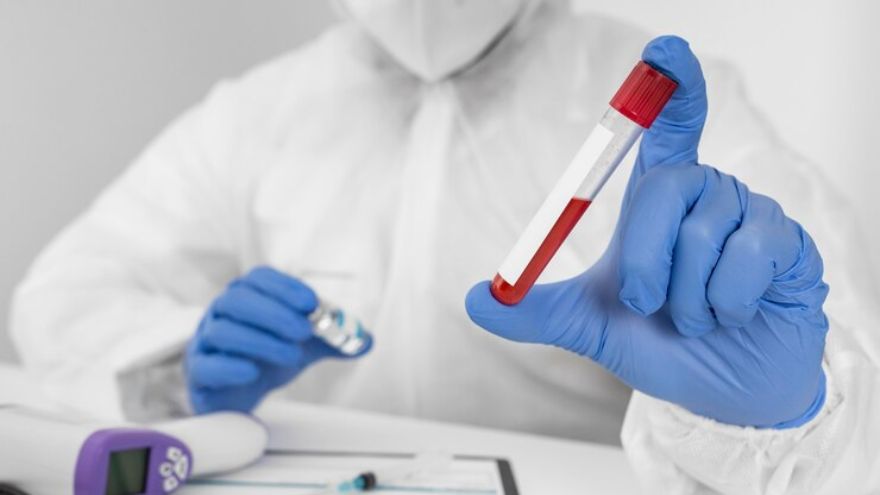
In the world of skincare, new ingredients often come and go, but some stand out due to their effectiveness and versatility. One such ingredient is kojic acid, a popular component in soaps and other skincare products. Kojic acid soap has garnered significant attention for its purported benefits in addressing hyperpigmentation, uneven skin tone, and more. But what exactly is kojic acid soap, and is it right for you? Let’s learn the details.
What is Kojic Acid Soap?
Kojic acid soap is a skincare product formulated with kojic acid as its active ingredient. Kojic acid is a natural compound derived from fungi, particularly Aspergillus oryzae, and is also a byproduct of the fermentation process of certain foods like sake, soy sauce, and rice wine.
This ingredient is widely celebrated for its skin-lightening properties and ability to inhibit the production of melanin, the pigment responsible for skin color. As a result, kojic acid soap is frequently marketed as a solution for hyperpigmentation, dark spots, acne scars, and uneven skin tone.
Kojic acid soap typically combines kojic acid with other nourishing ingredients like glycerin, coconut oil, or papaya extracts to provide additional moisturizing and exfoliating benefits.
Benefits of Kojic Acid Soap
Kojic acid soap offers a range of potential benefits for various skin concerns. Here are some of the primary advantages:
1. Reduces Hyperpigmentation
One of the most well-known benefits of kojic acid soap is its ability to reduce hyperpigmentation. By inhibiting tyrosinase, an enzyme necessary for melanin production, kojic acid helps fade dark spots, melasma, and age spots, resulting in a more even skin tone over time.
2. Lightens Acne Scars
Acne scars and blemishes can be stubborn, but kojic acid soap may help lighten these marks. Its gentle exfoliating properties remove dead skin cells while targeting discoloration.
3. Improves Skin Tone
Regular use of kojic acid soap can lead to a brighter, more radiant complexion. It’s particularly effective for individuals dealing with dull or uneven skin tone.
4. Antioxidant Properties
Kojic acid has antioxidant properties, which help protect the skin from damage caused by free radicals. This protection can slow down the signs of aging and improve overall skin health.
5. Addresses Sun Damage
Prolonged sun exposure can cause dark spots and uneven pigmentation. Kojic acid soap may help minimize the appearance of sun damage and restore a more uniform skin tone.
6. Exfoliates the Skin
Many kojic acid soaps are formulated with additional exfoliating ingredients. These help to slough off dead skin cells, revealing smoother and healthier skin underneath.
7. Combats Fungal Infections
Thanks to its antifungal properties, kojic acid soap may also help treat and prevent fungal infections like ringworm or athlete’s foot when used on the body.
Side Effects of Kojic Acid Soap
While kojic acid soap is praised for its benefits, it’s essential to be aware of potential side effects. Like any skincare product, it’s not suitable for everyone and can cause adverse reactions in some cases. Here are the common side effects to consider:
1. Skin Irritation
Kojic acid can be potent, especially for individuals with sensitive skin. Redness, itching, and irritation are possible side effects, particularly during the initial stages of use.
2. Increased Sensitivity to Sunlight
Since kojic acid inhibits melanin production, it can make the skin more sensitive to sunlight. This increases the risk of sunburn and damage, so it’s crucial to use sunscreen when incorporating kojic acid soap into your skincare routine.
3. Allergic Reactions
Some individuals may experience allergic reactions to kojic acid soap, manifesting as rashes, swelling, or hives. Always perform a patch test before using the product on larger areas of your skin.
4. Over-lightening of Skin
For individuals who do not wish to significantly lighten their skin, frequent use of kojic acid soap might result in unintended over-lightening. Moderation is key.
5. Possible Contact Dermatitis
Prolonged or excessive use of kojic acid soap can lead to contact dermatitis, a condition characterized by inflammation, dryness, and irritation of the skin.
How to Use Kojic Acid Soap Safely
To maximize the benefits of kojic acid soap while minimizing the risk of side effects, follow these usage tips:
-
Start Slow
-
Begin by using kojic acid soap once every other day to allow your skin to adjust. Gradually increase usage as tolerated.
-
-
Limit Contact Time
-
When applying kojic acid soap, avoid leaving it on your skin for extended periods, especially during the initial use. Start with one to two minutes and gradually extend the time if no irritation occurs.
-
-
Moisturize Regularly
-
Kojic acid soap can be drying. Follow up with a good moisturizer to keep your skin hydrated and prevent dryness.
-
-
Always Use Sunscreen
-
To counteract increased sun sensitivity, apply sunscreen with a high SPF before heading outdoors.
-
-
Perform a Patch Test
-
Before incorporating kojic acid soap into your routine, perform a patch test on a small area of your skin to check for allergic reactions.
-
-
Consult a Dermatologist
-
If you have underlying skin conditions or are unsure about using kojic acid soap, consult a dermatologist for personalized advice.
-
Who Should Use Kojic Acid Soap?
Kojic acid soap can be beneficial for individuals dealing with specific skin concerns, such as:
-
Hyperpigmentation: People with dark spots, melasma, or uneven skin tone.
-
Post-Inflammatory Hyperpigmentation: Those with discoloration following acne breakouts.
-
Sun Damage: Individuals with visible sunspots or photoaging.
-
Fungal Infections: Those looking for a natural remedy for fungal issues.
However, people with very sensitive or eczema-prone skin should approach kojic acid soap with caution, as it may exacerbate these conditions.
Myths and Misconceptions About Kojic Acid Soap
As kojic acid soap gains popularity, misconceptions about its usage and effects have emerged. Let’s debunk some common myths:
1. "Kojic Acid Soap Works Overnight"
While effective, kojic acid soap does not deliver instant results. Skin lightening and improvement in texture often require consistent use over several weeks.
2. "It’s Only for Lightening Skin"
Although known for its skin-lightening properties, kojic acid soap offers benefits beyond lightening, such as reducing acne scars and combating fungal infections.
3. "Natural Means It’s Always Safe"
Even though kojic acid is derived from natural sources, it can still cause side effects if not used properly. Always follow recommended guidelines and consult a dermatologist if needed.
Final Thoughts
Kojic acid soap can be a game-changer for those looking to address hyperpigmentation, acne scars, and uneven skin tone. Its ability to inhibit melanin production and provide gentle exfoliation makes it a versatile addition to any skincare routine. However, it’s important to use this product responsibly and be mindful of potential side effects, especially if you have sensitive skin.
By starting slow, moisturizing regularly, and protecting your skin from the sun, you can enjoy the benefits of kojic acid soap while minimizing risks. If you’re unsure whether it’s right for you, consult a dermatologist to ensure it aligns with your skin’s unique needs.
Kojic acid soap is not a one-size-fits-all solution, but for many, it holds the promise of clearer, brighter, and healthier-looking skin.
Related FAQs
1. How long does it take to see results from kojic acid soap?
Results can vary depending on individual skin types and the severity of pigmentation. Generally, noticeable improvements can be seen within 4 to 8 weeks of consistent use.
2. Can kojic acid soap be used daily?
Yes, but it’s recommended to start with less frequent use, such as every other day, to see how your skin reacts. Over time, you can increase usage to once daily if tolerated well.
3. Is kojic acid soap safe for all skin types?
Kojic acid soap is generally safe for most skin types but can cause irritation for sensitive or eczema-prone skin. Always perform a patch test before using it on your face or body.
4. Can kojic acid soap be used on the body?
Yes, many kojic acid soaps are suitable for use on both the face and body. Be cautious when using on sensitive areas, and avoid prolonged contact.
5. Does kojic acid soap remove tan?
Kojic acid soap may help lighten tanned skin by reducing melanin production, but it’s not a quick fix for severe tanning. Consistent use, combined with sun protection, is key.
6. Are there any alternatives to kojic acid soap for skin lightening?
Yes, alternatives include products containing ingredients like vitamin C, alpha arbutin, niacinamide, or licorice extract. Consult a dermatologist to find the best option for your skin.



